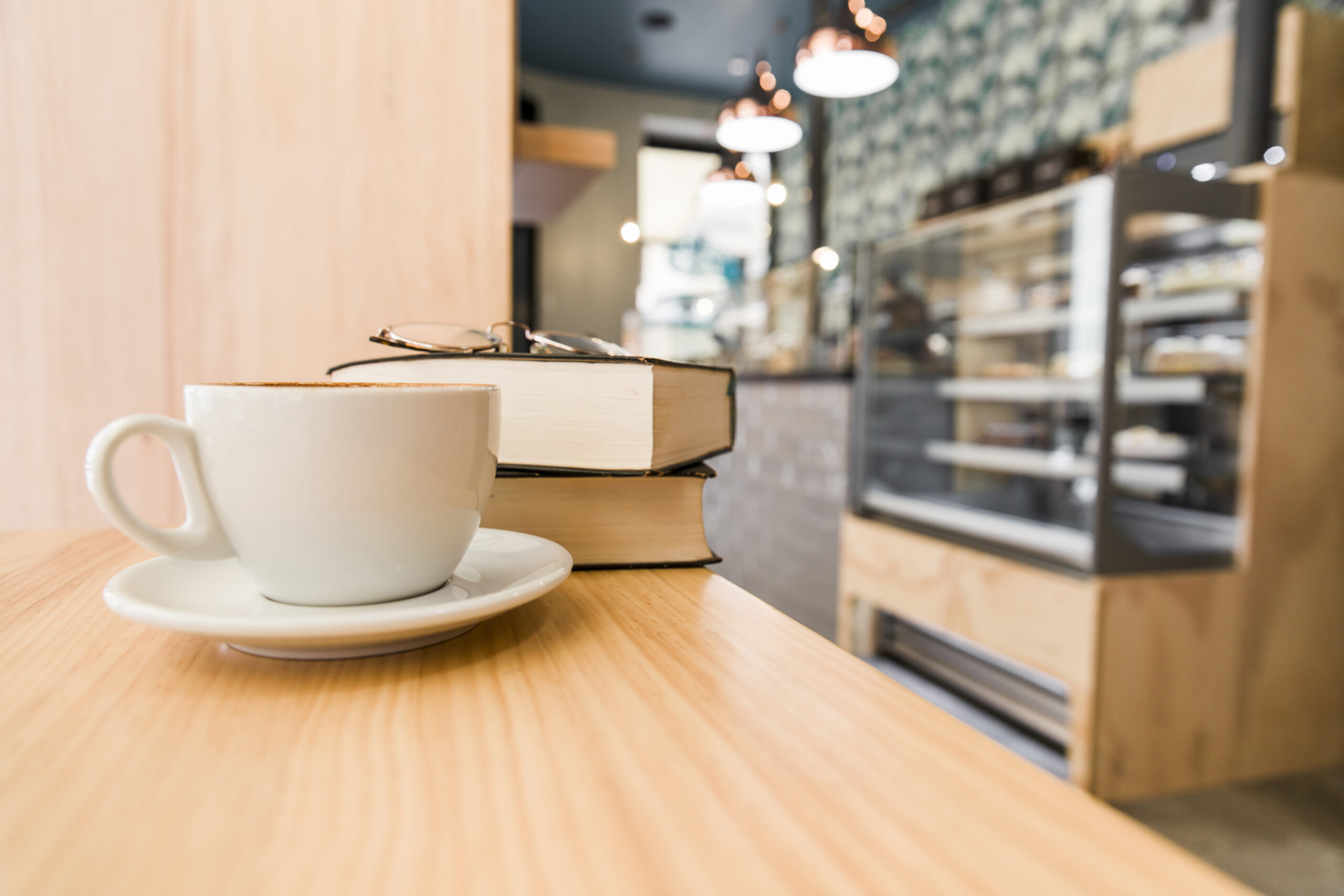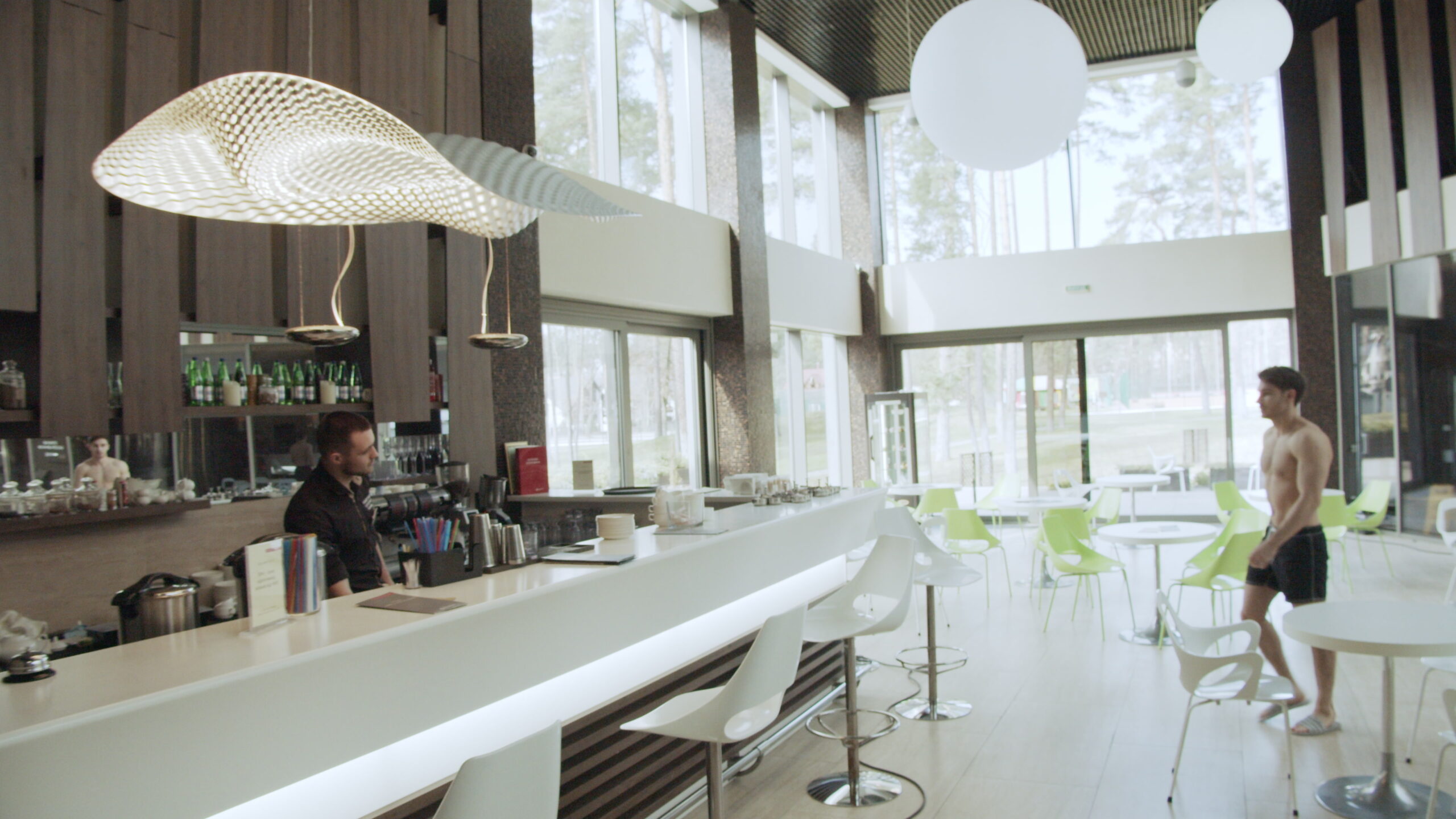Minimalist cafe designs can be implemented easily and efficiently if business owners know the mood and aesthetics they are going for. Here are some of the best ways to create a minimalistic cafe ambience in the establishment.
The core of minimalist cafe design is functional furniture which is highly practical without sacrificing style. It’s all about picking out pieces with clean lines and simple forms that can easily blend into the overall aesthetic of the cafe.
By using lightweight and versatile furniture like stackable chairs and tables that can be folded, flexible seating arrangements are offered that make it easier to accommodate any occasion or peak hours. Materials such as natural wood, metal or high-quality laminates are great as they are durable and always in style. Furniture with built-in storage solutions such as benches with hidden compartments or tables with shelving underneath maximises space efficiency — perfect for smaller cafes. Minimalist design also champions decluttered environments so furniture choices should avoid unnecessary embellishments while maintaining comfort and functionality.
Sleek stools with a commensurate bar-style table not only save space but also serve as a place to sit and be social. Besides, furniture in neutral tones helps them be in line with the general minimalist palette, softly upholstered pieces or cushions provide subtle pops of colour and texture. Another important aspect was the placement of furniture, focused on creating open pathways and easy accessibility for patrons and staff alike.
This balance between aesthetics and utility can be achieved by investing in thoughtfully designed furniture that is functional whereby cafes provide an invitingly comfortable area for customers while ensuring practicality for everyday operations.

The feeling of a minimalistic aesthetic in a cafe generally means simplicity, functionality and elegance should be contained within its clean counter design. The counter is the most important feature of any cafe which needs to invoke organisation and class. To that end, use sleek, clutter-free surfaces with polished concrete, marble or natural wood that exudes a modern charm yet timelessness.
Storage must be cleverly hidden and be a part of the counter with drawers and cabinets so that the utensils, equipment and supplies are not visible. This will not only maintain visual coherence but also facilitate the work in a way that is easy for the staff. The minimalist counters should have clean lines without superfluous or even undue ornamentation or embellishments. A neutral colour scheme such as white, black, or earthy tones, allows for a clean and well-coordinated atmosphere. Adding subtle design elements to it will provide an out-of-the-box feeling while under-counter LED lighting will provide glow and warmth without being overwhelming.
Of course, there should be a clear and straightforward layout: clear demarcation for ordering, picking up and paying all play a vital role in the smooth flow of customers. It should not be cluttered with anything like menu boards or promotional displays — instead, it uses digital screens or minimalist signage for cleanliness.
With functionality and simplicity in mind, a clean counter design elevates the aesthetic of the whole cafe, making it an inviting space that screams minimalist design principles from every nook and cranny. This would also go well with customers who enjoy a clean and clutter-free environment for their coffee.
Statement lighting becomes essential in minimalist café design, aiming for functional and aesthetic purposes. Every minute detailing in the light installation in a minimalist setting turns it into a focused or central feature piece that improves the ambiance, without compromising simplicity.
Popular choices would be pendant lights with their clean lines and sleek profile to slide smoothly into the minimalist look. Materials like matte black metal, brushed brass or frosted glass add subtle elegance without overwhelming the decor. Edison bulbs with their warm, soft glow make it cozy and inviting while still retaining the understated charm of minimalist design. Linear LED fixtures or even track lighting are perfect for a modern look since they evenly distribute light and accentuate some architectural features of the cafe.
Strategic placement is everything, from placing them above tables, counters or common spaces to create working but beautiful areas to even putting them on dimmers for the flexibility to create moods through the day from bright and fresh for morning productivity to the soft, gentle light of evening. Statement lighting can also be sculptural in nature; geometric shapes, cascading fixtures or oversized domes all serve dual duty as works of art — adding persona to the space without undermining its minimalist lean.
By focusing on lighting that incorporates form and function, a cafe owner is able to elevate the dining experience, turning what could be a simple coffee stop into a visually inviting retreat.

Open spaces, simplicity, functionality and serenity are in the very basis of a minimalist cafe. By keeping a focus on open layouts, a cafe can come up with inviting and calm yet spacious but cozy, spaces. Minimalist open spaces create a smooth flow and easy navigation by avoiding too many partitions and clutter of furniture.
That is how a feeling of freedom is created and the cafe would be more hospitable rather than crowded. Often, large, unobstructed windows are featured to allow natural light into the space and further give the area its airy ambience. Neutral tones such as whites, greys and muted earthy shades-further amplify openness into a harmonious, understated aesthetic.
@miliworks.id Coffee shop dengan konsep minimalis di luasan lahan yang kecil. Perpaduan area indoor dan outdoor sebagai tempat menikmati kopi sehingga dapat memeberikan kesan yang berbeda. #facade #coffeetime #coffeeshops #kedaikopi #fasad #desain #inspirasi #nongkrong #santai
The furniture in open spaces is usually minimalist, functional and placed with consideration to facilitate conversation but not clutter. Simple wooden or metallic tables with clean lines and comfortable chairs ensure sleekness and a modern feel without sacrificing floor space. Open layouts can also provide indoor plants and greenery, adding natural touches that increase the calming aspect without compromising simplicity.
An open-space minimalist cafe extends these operational benefits by making sure that the staff can easily move around inside and that the customer sees a much lesser obstruction of the environment. Open spaces serve the different needs of customers whether it is an individual nook for solitary guests or a large communal table for groups of people. The combination of functionality with unobstructed aesthetics makes such cafes unique in providing a relaxed atmosphere for guests to linger and enjoy the moment.
Functionality is at the heart of minimalist cafe design ensuring that the space is not only aesthetically pleasing but highly practical for customers and staff alike. A well-thought-out layout will prioritise open pathways to ensure ease of movement and accessibility. This would mean creating distinct zones for ordering, pickup, and seating without clutter or confusion.
Streamlined furniture arrangements allow efficient use of space while maintaining a sense of openness. Compact tables and chairs can, for example, be arranged to make maximum use of seating without being too congestive. The counter area, being the focal point of any cafe, should be designed with hidden storage to keep tools and ingredients hidden to maintain a clean, uncluttered look. Employing multifunctional furniture, like benches with integrated storage or foldable tables, improves functionality without adding visual clutter.
Minimal signage, such as clean typography or simple symbols, navigates customers with ease while integrating into the design with ease. And of course, the lighting also plays its functional role in making the environment cozy enough to be productive. It is the strategic placement of task lighting that allows the baristas to work efficiently and the ambient lighting that enhances patrons’ dining experience.
Even small details like placing outlets near seating for digital nomads or designing spill-proof surfaces contribute to an extremely functional but minimalist setup. Ultimately, a minimalist cafe design will not only simplify operations but also make the space inviting and stress-free to anyone who comes into it.

Need help with interior design? I-dzine is your answer to it. We are experts in transforming space from virtual to reality. Our expertise in renovation design, oversight, and management ensures that your property is well-designed. We relentlessly focused on delivering meticulously created, beautiful, functional designs.